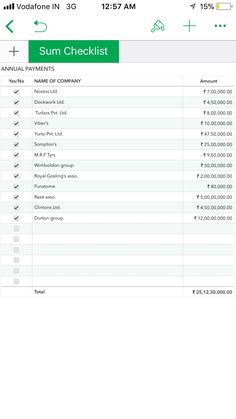Accounting for manufacturing businesses

Direct material (or raw material) inventory is a calculation of all the materials your manufacturing business is using to make your product – all the materials consumed or identified with your product. To reduce the costs of doing business, you must understand first where your production costs lie. As you streamline manufacturing processes to eliminate waste and shorten the time between receiving and orders, you can also streamline your accounting processes and use them to gather relevant operating information. Factory overhead costs must be aggregated into cost pools and then allocated to the number of units produced during a reporting period, which increases the recorded cost of inventory. The number of cost pools should be minimized to reduce the amount of allocation work by the closing entries closing procedure accountant.
Cost-flow assumption methods.
The right accounting solution will also provide easy-to-read financial reports that you can share with tax preparers and what is an accrual difference between acrrual accounting and cash accounting accountants. You should also be able to create budgets and use other tools for financial forecasting. Unlike retail and service-oriented operations, manufacturing businesses face a special set of challenges regarding accounting and costing methods. Manufacturing businesses need to maintain a close watch on their books to ensure they generate the required amount of profit relative to their costs since they create products from scratch. It involves tracking the costs for every item you produce, including direct materials, direct labor, and manufacturing overhead.
- Here’s what you need to know to navigate manufacturing accounting successfully, including the best practices for the industry, the most complicated processes involved, and some fundamental terms.
- Fixed labour costs could include contractors, technicians, and maintenance staff with set jobs to do with set fees.
- It integrates easily with third-party software solutions to help with project management.
- Many manufacturers may also find that management software can augment their accounting solution to help them with project management from design to distribution.
The direct labor Manufacturing account tracks all of the wages paid to workers directly involved in the production process. This account tracks all of the raw materials or physical items necessary to create a product. The Manufacturing account can be used by businesses that produce products or goods. It is a tool that companies can use to help manage the finances and inventory of a manufacturing company. A manufacturing company differs from a merchandising company in the reporting of the cost of the merchandise (goods) available for sale and sold during the period. A manufacturing company has no need to prepare a manufacturing account, statement of production, or a cost sheet, before preparing the income statement.

It’s wise for a manufacturing accountant to follow shifting customer trends as a change in demand could drastically alter the cost landscape for the business. The cost for produced products remains here until the company sells the goods to distributors or consumers. The finished goods Manufacturing account represents all finished products ready for sale. Sage is particularly good at automating financial administration, and with multiple pricing tiers and structures, you’re sure to find a level that works for your specific business needs. The software handles everything from procurement to sales, as well as inventory, financials, and even scheduling.
The weighted average is generally the least common cost flow assumption for manufacturers. In fact, the IRS previously dismissed this method as inaccurate, only allowing businesses to use it for tax purposes in 2008. While you probably won’t handle all your business’s accounting personally, you still need to understand it. A lot of manufacturing accounting revolves around creating records that managers can use to inform business decisions.
This method is by far the most common method used in manufacturing businesses to accurately estimate their costs. In standard costing, businesses assign standard costs for raw materials and labor when factoring them into inventory and production expenses. Standard costing enables manufacturers to follow through with the production process based on a set standard which can later be reassessed based on the variance they calculate by zeroing in on each stage of production.
You might look at each project in detail – down to costs, materials, and overhead. Look at where the inefficiencies are in the production process and where the waste is coming from, adjusting the pricing if required. Standard costing is useful if you are making similar products or large quantities of a specific product.
Costing Methods for Manufacturing Businesses
If the software is too complex or too time-consuming to implement, you can end up without seeing any return on the investment. Material costs cover all the inventory stock items that go into a finished product. This includes raw materials, parts, and components – and also consumables like screws and adhesives.
Direct Costing
The two common types that inventory can be arranged in light of this are the perpetual and the periodic inventory system. Advanced job costing functionalities empower you to identify areas for cost reduction, enhance productivity, and boost profitability. He’s visited over 50 countries, lived aboard a circus ship, and once completed a Sudoku in under 3 minutes (allegedly). You can automate your inventory management by implementing inventory management software, barcode scanners, and warehouse robotics.
Finished goods inventory
The chief disadvantage lies in having to routinely update the standards which can be arduous in case of constantly changing market conditions. With proper inventory management, you can ensure a steady supply of materials while keeping expenses under control. Manufacturing accounting is a complex process that requires specialized research and development randd knowledge and skills. In order to ensure accuracy and efficiency in the process, there are certain best practices that should be followed.
